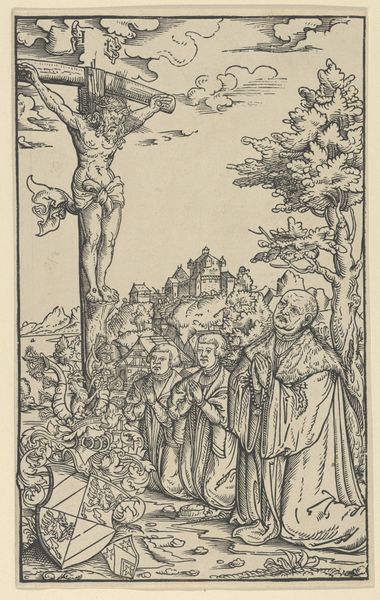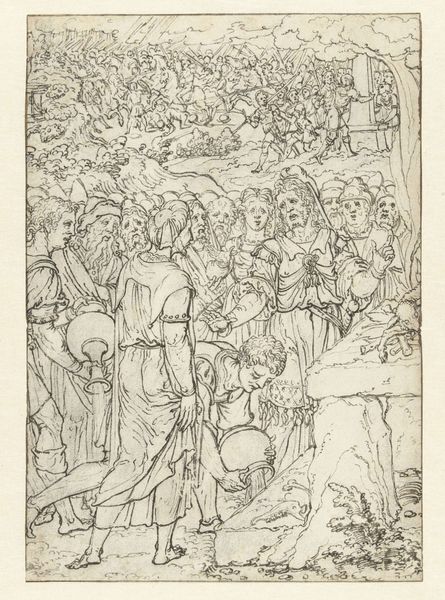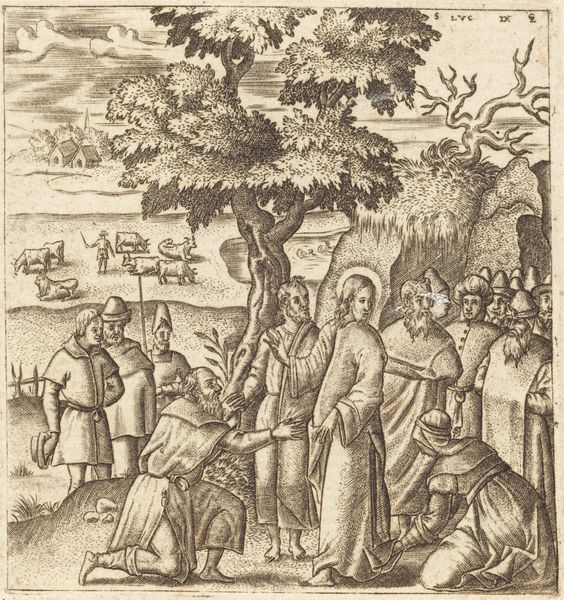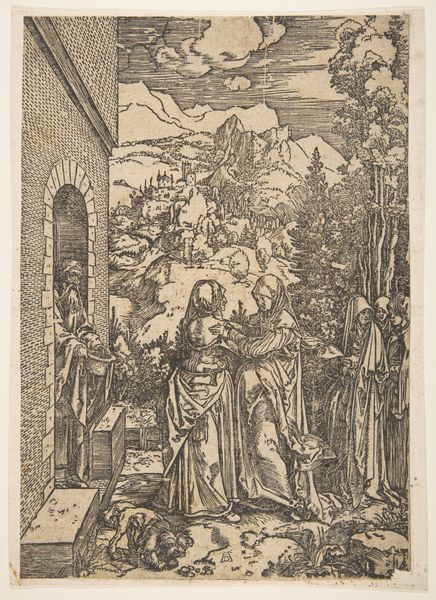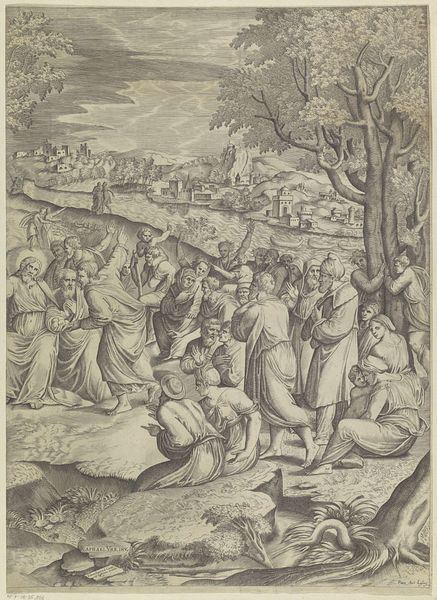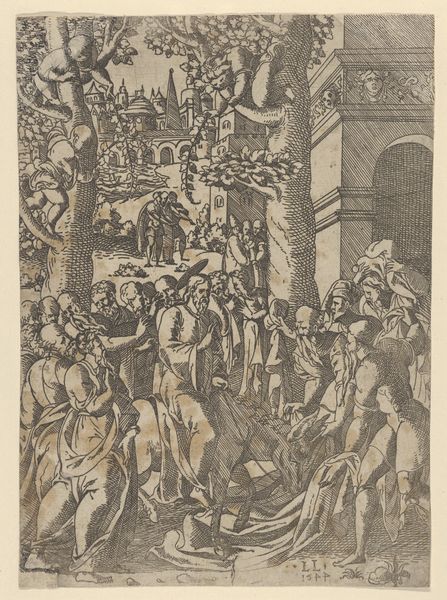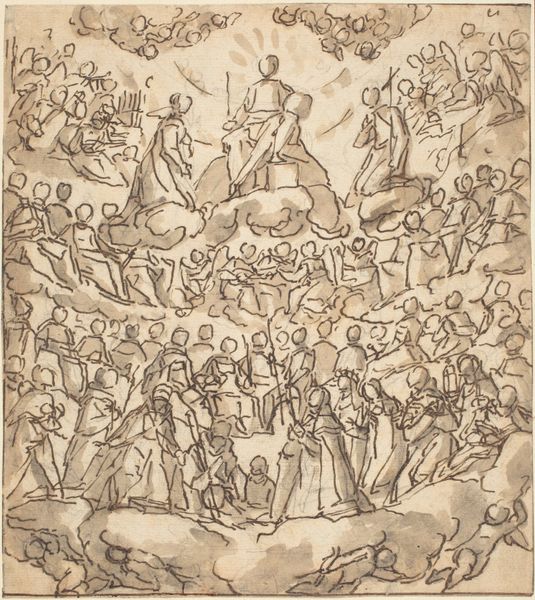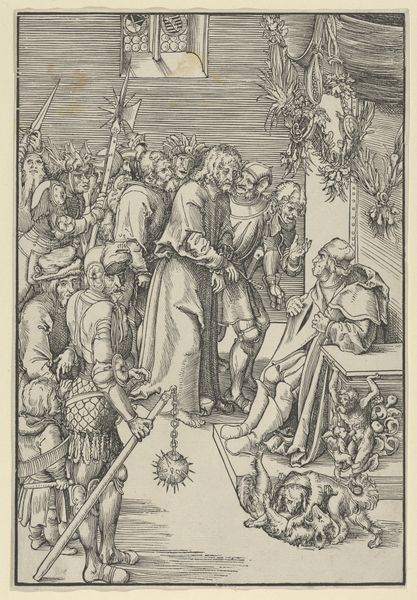
print, woodcut, engraving
#
narrative-art
# print
#
landscape
#
figuration
#
woodcut
#
line
#
genre-painting
#
history-painting
#
engraving
Dimensions: 6 5/8 x 5 11/16 in. (16.83 x 14.45 cm) (image)
Copyright: Public Domain
Curator: This is Saint John the Baptist Preaching, a woodcut, or perhaps even an engraving, created around 1637. It resides here at the Minneapolis Institute of Art. Editor: Okay, right off the bat, it's the linear energy that grabs me! Like a sketch escaped from a dream, all sharp angles and packed figures… but also with a real calm at the center, around John. Curator: Let’s unpack that energy. Look at how this anonymous artist is visualizing a religious narrative. John's figure, radiating outward, is juxtaposed against a very busy background—the militarization and urbanization on display feel so removed from his message. Editor: Yeah, there's a contrast happening. He's a literal wild man, wearing furs, preaching humility… while these almost comically overdressed figures gather 'round. It makes you wonder who is really hearing him. Are they drawn by curiosity or genuine yearning? Curator: Consider, too, how printmaking allowed for dissemination of these ideas. It brought images, religious and otherwise, to a wider public, thus influencing the way Reformation thought spread throughout various social classes. John becomes not just a biblical figure but an emblem for societal change. Editor: It's like a proto-meme, almost! Think about how instantly visual something like this would communicate, even to someone who couldn't read. Also, it's neat to spot little stories, like the sleeping child on the bottom left. Every character adds depth and irony. Curator: I agree. And those seemingly innocuous details are vital. They tell us about daily life and add nuance to the socio-religious landscape the artist sought to portray, complicating simplistic interpretations. This isn't merely biblical illustration. It's cultural commentary. Editor: I keep coming back to the lines. See how they carve space, defining robes and beards and… is that a battle going on in the back? It makes the whole thing feel alive, immediate. It's not just looking AT something; it’s experiencing it, you know? Curator: That "experiencing" is precisely where art transcends its historical moment. What we learn, as viewers centuries later, is about how cultural anxiety, faith, and power were being negotiated at the time, and what kind of graphic language the artist could call upon to materialize it. Editor: So, what starts as simple black lines becomes this rich world, open for exploration and argument. Pretty great trick if you ask me. Curator: Agreed. "Simple lines," when put to the service of art, history, and critical thinking, reveal an amazing depth of knowledge and ingenuity.
Comments
No comments
Be the first to comment and join the conversation on the ultimate creative platform.
